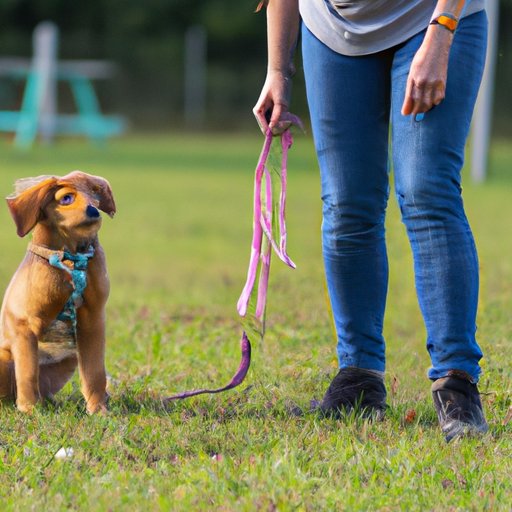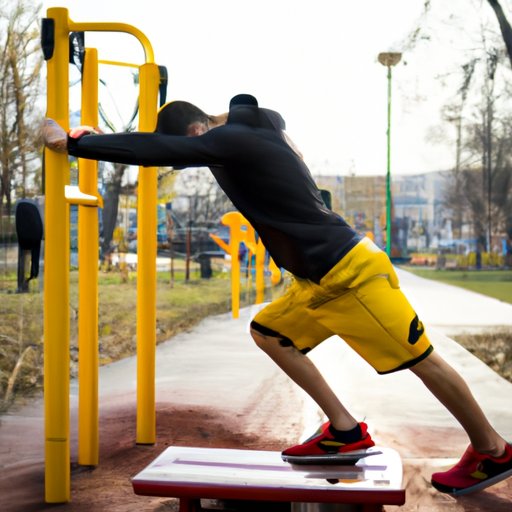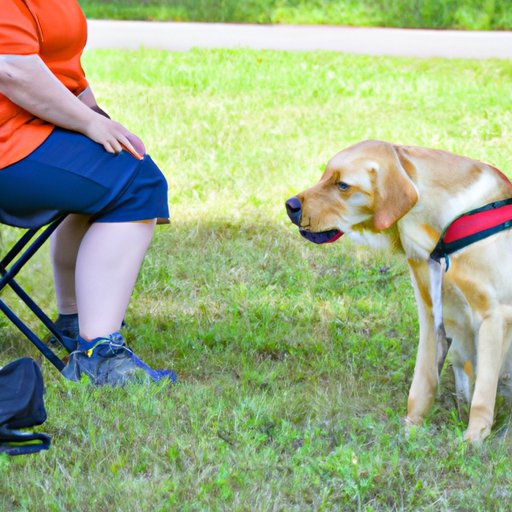Introduction
Service dogs can provide an invaluable service to those with medical or physical disabilities. Training your dog to become a service dog requires patience and dedication, but the process doesn’t have to be overwhelming. This article will provide an overview of the steps involved in training your dog to be a service dog.

Research the Specific Tasks and Behaviors Required for Service Dogs
The first step in training your dog to be a service dog is to research the specific tasks and behaviors required. Each organization that certifies service dogs has its own requirements for what tasks and behaviors must be mastered by the dog. For example, the Assistance Dogs International (ADI) Standards for Public Access state that “the assistance dog should have basic obedience skills and demonstrate appropriate public behavior” (Assistance Dogs International, n.d.). It is important to familiarize yourself with the specific requirements of the organization you plan to use for certification.

Start with Basic Obedience Training
Once you understand the specific tasks and behaviors required for your service dog, the next step is to begin basic obedience training. According to the American Kennel Club (AKC), the most important commands to teach a dog are sit, stay, come, leave it, and heel (American Kennel Club, n.d.). These commands will form the basis for more complex behaviors in the future. Start by establishing the basic commands in a low-distraction environment, then gradually add more distractions as your dog improves.
Building up to More Complex Commands
Once your dog has mastered the basic commands, you can begin introducing more complex commands such as retrieving items, guiding the handler through doorways, and providing tactile stimulation. The AKC recommends starting with simple commands, such as “fetch” or “take it,” and gradually building up to more complex ones (American Kennel Club, n.d.). As with the basic commands, start with low-distraction environments before gradually adding more distractions.

Develop a Consistent Training Routine
Creating a consistent training routine is essential for teaching your dog to become a service dog. This involves structuring your training sessions and keeping a log of your progress. Set aside time each day for training and make sure to stick to the same schedule each day. Additionally, keep a record of your progress so you can track your successes and areas for improvement.
Practice in Different Environments
In order to prepare your dog for any situation, it’s important to practice in different environments. Take regular practice trips to places like parks, stores, restaurants, and other public spaces. This will help your dog get used to different sights, sounds, and smells, and will help him or her learn to focus on commands in a variety of situations.
Rewarding Your Dog
Rewarding your dog is an important part of the training process. Positive reinforcement is key to encouraging desired behaviors. Use treats and praise to reward your dog when he or she follows a command correctly. Celebrating successes is also important; take time to celebrate when your dog masters a new command or behavior.
Conclusion
Training your dog to become a service dog takes time and dedication. The process starts with researching the specific tasks and behaviors required and establishing basic commands. Then, gradually build up to more complex commands, practice in different environments, and create a consistent training routine. Finally, use positive reinforcement to reward your dog for good behavior. With patience and hard work, you and your dog can achieve success in service dog training.
For more information on service dog training, visit the American Kennel Club’s website. Additionally, the Assistance Dogs International offers resources and standards for service dog training.
(Note: Is this article not meeting your expectations? Do you have knowledge or insights to share? Unlock new opportunities and expand your reach by joining our authors team. Click Registration to join us and share your expertise with our readers.)
